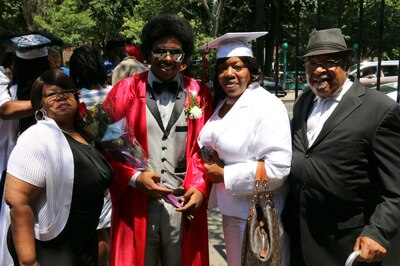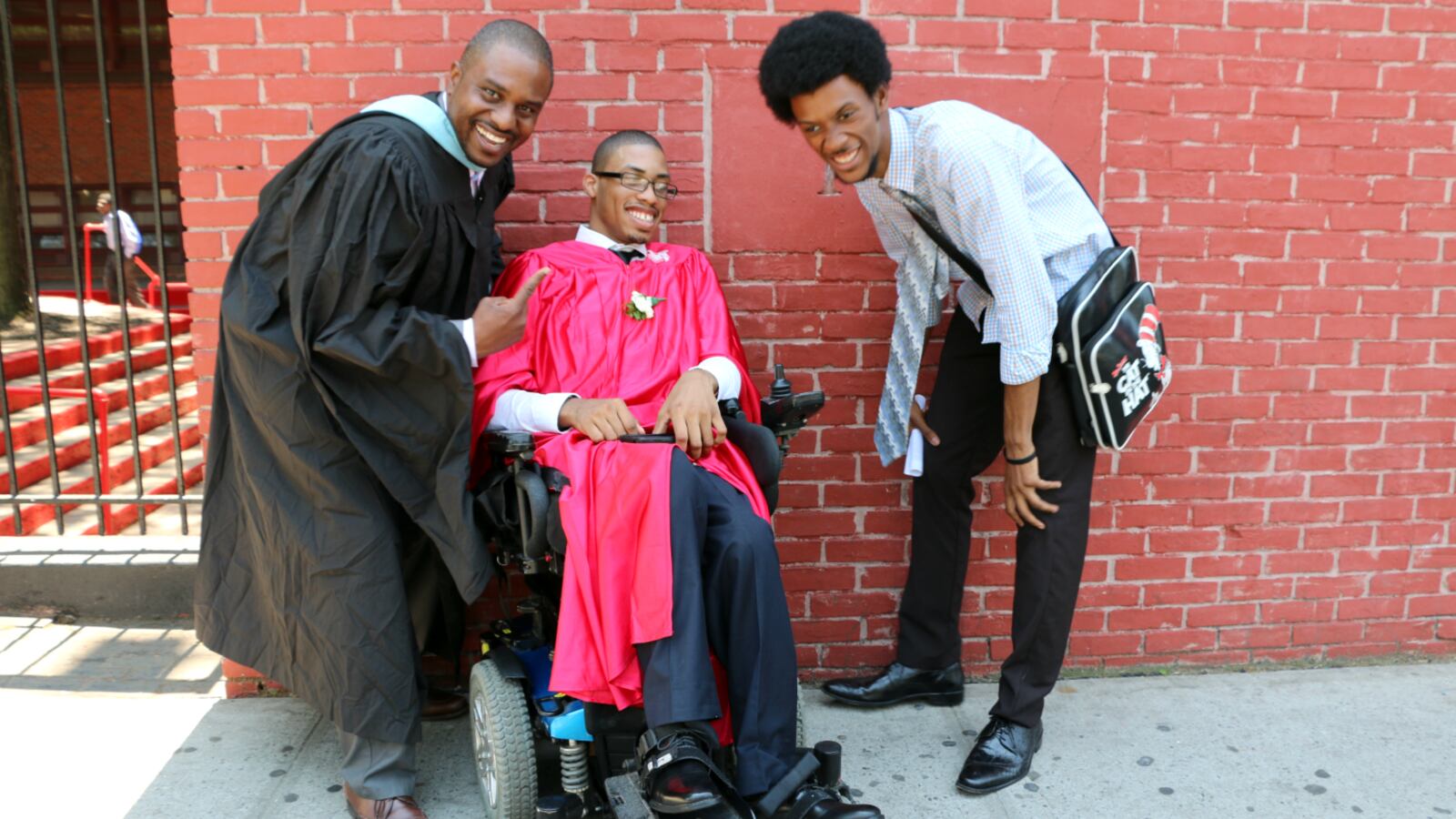Last June, Boys and Girls High School had a new principal, a rising graduation rate, and a fresh sense of hope. Things seemed to be going so well that the mayor stopped by the school’s graduation ceremony.
“You have defied expectations,” Mayor Bill de Blasio told the crowd gathered inside the historic Bedford-Stuyvesant, Brooklyn school. “You have proved the critics wrong.”
A year later, as a new class graduated Friday, that optimism has been overshadowed by uncertainty.
Officials announced Thursday that the principal, Michael Wiltshire, will leave the school next month after less than two years there. As the city searches for yet another new leader for the troubled school, it faces a rapidly shrinking enrollment, a tarnished reputation, and the threat of closure if it fails to keep making academic gains.
Yet community leaders and alumni continue to rally around the “pride and joy of Bed-Stuy,” as the gigantic red-brick school once was known. And even students who watched two principals and dozens of teachers leave the school over the past four years remain convinced that it will carry on.
“Even though it’s going through some problems right now,” said Jon Wilson, 19, as he left the school Friday in a shiny red graduate’s cap and gown, “it’s still a good school.”
Despite such loyalty, Boys and Girls has floundered in recent years. Its enrollment plummeted from 2,300 students in 2010 to 330 today, only 50 percent of students graduated on time last year, and the state has labeled it “out of time” to make drastic improvements.

When the school’s previous principal left abruptly in Oct. 2014 after clashing with the city over its turnaround plan for Boys and Girls, the city asked Wiltshire to take over. It made him an unusual offer: He would retain control of Medgar Evers College Preparatory School, the selective Crown Heights school he’d run for many years, even as he took the reins at Boys and Girls. (After this month, he will return full-time to Medgar Evers.)
On Friday, several students and faculty members said he had helped stabilize Boys and Girls during his short time there, even as he divided his time between it and Medgar Evers. He introduced school uniforms, provided tutors for struggling students, and raised academic expectations, several people said.
“He did everything he could to fix the school,” said Langston Rowlings, 18. “He challenged us to do better.”
Under Wiltshire, the school’s graduation rate rose 8 percentage points and its share of students considered ready for college-level work increased 3 points — though nine in 10 students still do not meet that benchmark. Officials said this year’s graduation rate is not finalized, but some staffers said it was expected to reach at least 60 percent.
Other people were more critical of Wiltshire’s short tenure at Boys and Girls.
Lauren Segars, the class of 2016 salutatorian, said he never developed deep ties with students there. She also noted that he limited students’ access to guidance counselors who had been brought in to provide social-emotional support.
“Some students come from broken homes,” said Segars, who will attend Loyola University on a full scholarship. Without adequate counseling, “those kids would just walk through the school without any direction.”
Others recalled how Wiltshire’s administration had encouraged dozens of students who were unlikely to graduate on time to switch schools.
“The chancellor gave him the power to take kids out of here who were overage and under-credited,” said Jamaal Harvey, a special-education teacher. However, he said the alternative schools where the students were sent could offer them more personalized support. “It was in their best interest and in the best interest of our school.”
Wiltshire did not address his pending departure during the graduation ceremony, according to attendees. His message in the graduation booklet also did not mention it. Instead, he wrote to the graduates: “Even though my time with you has been brief, you have made a significant impact in my life.”
After the ceremony Friday morning, girls streamed out of the building in white caps in gowns, and boys in red. They smiled for countless photos near the building’s historic murals, where images of shackled slaves give way to paintings of African American students reading and doing science experiments.
Off to the side, Tyjuan Felton, a class of 2016 graduate, chatted in his wheelchair with Keith Robinson, a 2013 graduate who had returned to work at the school last year as a paraprofessional supporting students with disabilities. Felton praised Robinson, who had showed up to watch his former student graduate.
Before having Robinson as his aide, Felton said, “I wasn’t used to people caring that much.”
Then talk turned to Boys and Girls. Both hoped the new principal, whoever it was, would restore the school to its former glory.
“This,” Robinson said, nodding towards the school, “is the heart and soul of Bed-Stuy.”


